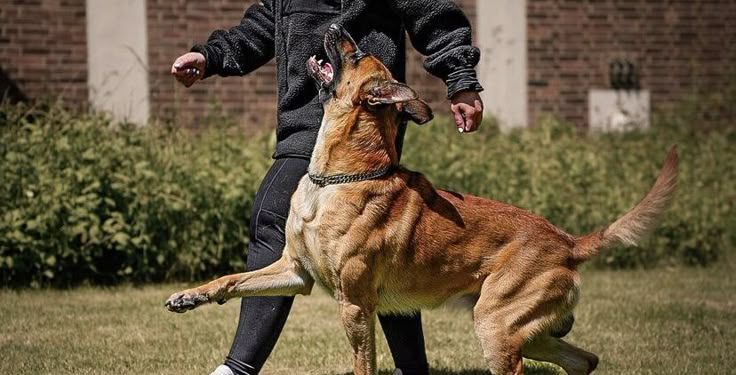For dog owners in Pasadena, finding the best dog trainers Pasadena CA for their beloved canine companion is a crucial step toward a harmonious home and a well-adjusted pet. With numerous options available, navigating the choices can feel overwhelming. The “best” training isn’t a one-size-fits-all solution; it’s about finding the perfect fit for your dog’s unique personality, your family’s lifestyle, and your specific goals within the Pasadena community.
This guide will walk you through the essential steps and considerations to help you choose the ideal dog training program in Pasadena, ensuring a positive and effective experience for both you and your furry friend.
1. Define Your Training Goals and Your Dog’s Needs
Before you start looking for a trainer, take some time to clarify what you want your dog to learn or what behaviors you want to address. This will help narrow down your options.
- Puppy Essentials: Are you bringing home a new puppy and need help with socialization, house-training, nipping, or basic commands?
- Basic Manners: Does your adult dog need to learn polite leash walking, reliable recall, or stop jumping on guests?
- Behavioral Challenges: Are you dealing with more complex issues like reactivity (barking/lunging at other dogs or people), separation anxiety, aggression, or severe fear?
- Advanced Skills: Are you interested in agility, therapy dog work, or off-leash reliability?
Understanding your specific needs will guide you toward trainers who specialize in those areas.
2. Research Training Methodologies and Philosophy
The methodology a trainer uses is paramount. Always prioritize humane, science-based approaches.
- Positive Reinforcement: This is the gold standard in modern dog training. Trainers using positive reinforcement reward desired behaviors with treats, praise, toys, or play. This builds trust, makes learning enjoyable for your dog, and fosters a strong bond.
- Avoid Aversive Methods: Steer clear of trainers who use punishment-based techniques, choke chains, prong collars, or e-collars (shock collars) as primary training tools. These methods can cause fear, pain, suppress behavior without addressing the root cause, and damage your relationship with your dog.
- Desensitization & Counter-Conditioning: For behavioral issues like reactivity or fear, ensure the trainer is proficient in these methods, which gradually change a dog’s emotional response to triggers.
3. Look for Certifications and Experience
While dog training isn’t universally regulated, professional certifications indicate a trainer has met rigorous standards of knowledge and ethics.
- Certifications to Look For:
- CPDT-KA (Certified Professional Dog Trainer – Knowledge Assessed): Issued by the Certification Council for Professional Dog Trainers (CCPDT).
- KPA CTP (Karen Pryor Academy Certified Training Partner): Graduates of an intensive positive reinforcement program.
- CDBC (Certified Dog Behavior Consultant): From the International Association of Animal Behavior Consultants (IAABC), for those specializing in complex behavioral problems.
- Experience Matters: Look for trainers with a proven track record, especially with your dog’s breed or specific behavioral challenges. An experienced trainer will have a deeper understanding of various temperaments and learning styles.
4. Consider Program Types and Flexibility
Different training needs are best met by different program structures.
- Group Classes: Cost-effective and great for socialization, especially for puppies or basic obedience. Many local pet stores or community centers in Pasadena offer these.
- Private Sessions: Offer personalized attention, ideal for addressing specific household behaviors or for dogs who are easily distracted or stressed in group settings. These can often be done in-home for real-world application.
- Board & Train Programs: Your dog stays with the trainer for an intensive period (e.g., 2-4 weeks) for immersive training. Can be highly effective for complex issues or for owners with limited time, but typically more expensive.
5. Read Reviews and Ask for Referrals
Word-of-mouth and online reviews are invaluable tools for assessing a trainer’s trustworthiness and effectiveness.
- Online Platforms: Check Google, Yelp, and specialized pet service sites for 5-star reviews and detailed testimonials. Look for consistent themes of success, professionalism, and humane methods.
- Veterinarian Referrals: Your vet often has a network of trusted trainers they recommend for various issues.
- Local Pet Community: Ask friends, neighbors, or fellow dog owners in Pasadena for their experiences.
6. Schedule an Initial Consultation
Most reputable trainers offer a consultation (sometimes free or at a reduced rate). This is your opportunity to:
- Discuss your goals and your dog’s specific needs.
- Assess the trainer’s communication style and philosophy.
- Ask about their methods, experience, and the structure of their programs.
- Ensure you feel comfortable and confident with their approach.
Conclusion
Choosing the best dog training in Pasadena is an investment in your dog’s happiness and your peace of mind. By defining your goals, researching methods, checking credentials, considering program types, and seeking trusted recommendations, you can find a professional who will empower you and your canine companion to enjoy a harmonious and fulfilling life together in the vibrant Pasadena community.








